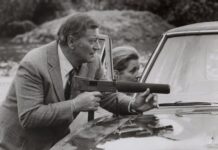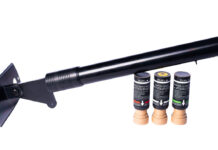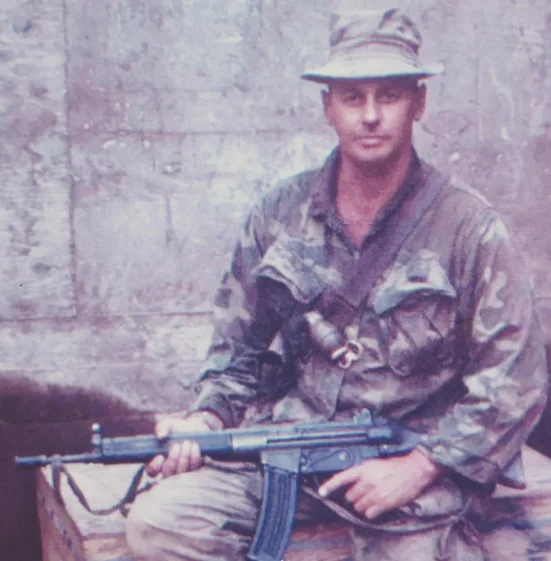
You remember that scene in The Big Lebowski where we hear the classic line, “This isn’t Nam, this is bowling, there are rules.” When it comes to SEALs in Vietnam, there didn’t seem to be many, if any, rules—at least when it came to their firearms. They were new and were willing to try a lot of guns in Vietnam. The Stoner 63, the Remington 7188, and even a 5.56 caliber G3. Officially, it was known as the T223.
G3 in 5.56 sounds a lot like the HK33, but the T223 came to be in 1965. From all the sources I can find, the HK33 didn’t hit the world til 1968. Official documents refer to the T223 as a modified G3 rifle. Maybe H&R got a proto release of the HK33 or data package to produce the T223.
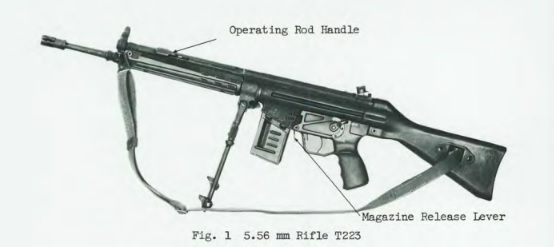
The T223 found its way to Vietnam, at least for some time. How many deployed, where they went, and how they performed seems a bit lost to time. We do know that SEAL Team 2, Platoon Ten, carried at least one. Photos of SEAL Rudy Boesch show him carrying the weapon.
It’s possible only SEAL Team 2 carried the weapon. It does seem that very limited numbers were produced. It’s known that Harrington and Richardson produced the guns under a license from HK.
Why They Wanted The T223
It’s not clear why exactly the SEALs wanted the T223. The most likely official answer would be that they were just experimenting with what worked. The M16 series was around at this time, but you have to remember it was the first time the US Military adopted an intermediate-caliber assault rifle. Trying out other options wasn’t a bad idea.
It’s also worth mentioning that the rollout of the M16 wasn’t great, so looking for alternatives seemed smart. SEALs were already using the M16 and seemingly enjoyed the rifle. However, they were willing to experiment with the weapon. SEALs weren’t the only ones.

They were the only guys to take the gun to Vietnam—from what I can find—but the Army also gave the T223 a shot. It was part of the SAWS program, which started in 1965. The SAWS pamphlet lists some basic information about the gun, but I’m not sure how accurate that information is. However, the 14.5-inch barrel length would have been very attractive as a carbine in a world of 20-inch barrel M16s.
The T223 wasn’t just a caliber convert G3. H&R modified the weapon to make it more ergonomic. They installed a last-round bolt hold open and a bipod at the very rear of the handguard. Although, the photo in the SAWS pamphlet shows a standard bipod.
Hitting Vietnam with the T223
According to Hunters and Shooters: An Oral History of U.S. Navy SEALs in Vietnam, SEAL Rudy Boesch liked the weapon because of its 40-round magazines. At the time, the standard M16 topped out at 20 rounds, so double the ammo was double the fun. Rudy carried four magazines of 40 rounds for his T223.
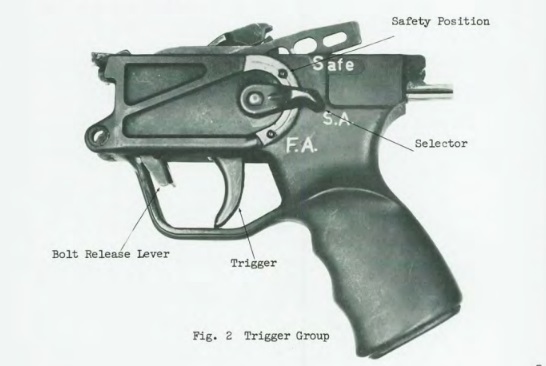
He states that the individual SEAL was allowed to choose their weapon. Rudy took a liking to the T223 and decided to take it to Vietnam. He expressed a fondness for how easy it was to take care of the gun. It was easy to clean and worked well. The 40-round magazines wouldn’t fit in G.I. mag pouch, so he initially carried them in his pockets, but eventually modified a Chicom chest rig made for AK to carry the mags.
According to the book, he used the weapon in combat. He tells tales of ambush and ops. It’s certainly worth a read. The T223 didn’t receive any complaints in the book, so it seems to have worked quite well. The roller-delayed design had a good history of reliability, and downsizing to 5.56 isn’t that difficult.
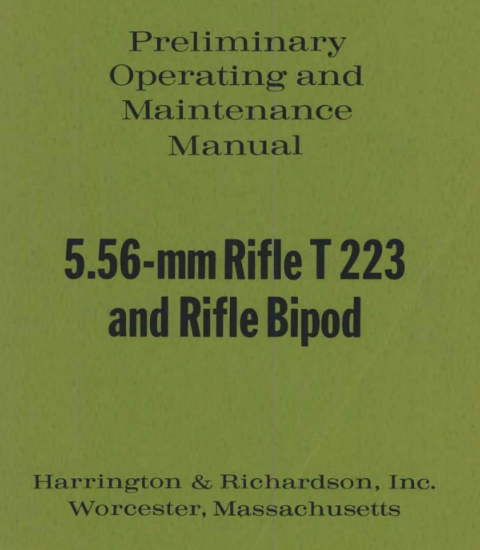
The End of the T223
The M16 became the standard, and the T223 wasn’t destined to remain in the armory for long. Reed Knight owns one, and another remains in the Ft. Sheridan Museum, which contains one of the guns used in the SAWS testing. The T223 was an interesting experiment at an interesting time. SEALs and most special ops would eventually adopt another roller-delayed HK design in the form of the MP5.


